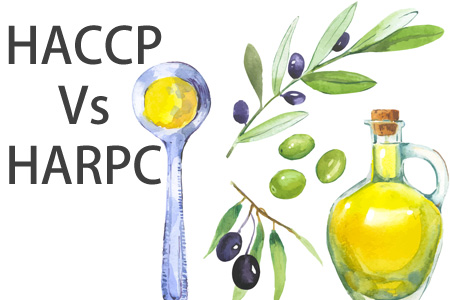Of late, Hazard analysis and risk-based preventive controls (HARPC) have been discussed a lot. Beginning September, 2016, this method became mandatory to be implemented by a large number of companies. It marked a successful transition by FSMA (Food Safety Modernization Act) from a reactive approach to a proactive approach for food safety. Under this, food companies will now need to either elevate their HACCP (Hazard Analysis at Critical Control Points) program, or will have to formulate a new food safety plan based on HARPC. However, before doing that, it is important for all to understand the differences between HARPC and HACCP, and how companies can adhere with the compliance prerequisites.
How is HARPC Different from HACCP?
HARPC is more of a risk-based entity, while HACCP is more prescriptive and based on the seven-stage procedure. The risk-based analysis compels skipping these seven stages to determine how the associated risk can be managed effectively. An HACCP plan is also not sufficient under HARPC, for the need of the hour is to have a more extensive food safety plan.
Impact the HACCP to HARPC Migration will have on F&B Companies
Under the new FSMA rules, FDA has changed the terminology for defining how and which products must be monitored from ‘reasonably likely to occur’ to ‘significant’. The primary reason for this change is the FDA’s attempt to differentiate between the traditional HACCP plan and the newer HARPC Food Safety Plan. This will need food companies to consider the hazards associated with the entire supply chain, from where food is being manufactured to where it is being shipped, and more. This needs to be done for assessing the criticality of associated risks and whether they are significant or not.
HARPC Plan can only be prepared by a Preventive Controls Qualified Individual (PCQI)
As per the regulations related to PCQI:
- Every food facility needs to have at least 1 PCQI
- This individual will be responsible for:
- Drafting the Food Safety Plan
- Validating Preventive Controls
- Assessing Existing Records
- Reassess the Food Safety Plan
- To become eligible, a PCQI will need to:
- Complete FDA-recognized training as per risk-based preventive controls curriculum, or
- Possess sufficient job experience that qualifies him to develop and engage a food safety system
It is not necessary for a PCQI to be an employee of the organization he is responsible to oversee. So those who don’t have a qualified personnel in-house, can also go for a freelance expert for assistance.
Things Companies Need to Do for Becoming Compliant
- Understand what has to be done with HARPC, including building a strategy around it
- Work in a team to determine associated risks, their significance and how those can be derived into food safety plan
- Assess your current system structure. Determine the controlling steps and put them with the preventive controls. Check the risk control, monitoring associated risks, engaging corrective actions and validation procedures on them.
To get guidance on modification, development and implementation of existing HACCP plan to comply with the preventive controls food safety plan, join expert speaker Ron Vail in an information-packed audio conference, titled ‘Converting HACCP to Preventive Controls’ on Friday, February 10, 2017. Besides aforesaid topics, the session will cover interpretation of the FSMA Preventive Controls requirements. It will also include the differences between the HACCP and Preventive Controls Food Safety Plan and provide general guidance for integration with GFSI food safety standards.


